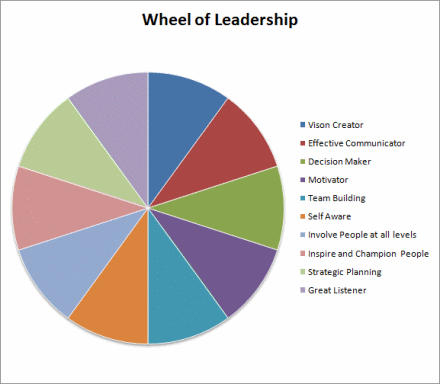

The Good, The Bad and The Ugly of LeadershipUse the questions and Leadership tool at the end of the article to explore your own situation. I've been speaking to Managers and Directors, who’ve been on the receiving end of some management and leadership styles that have left them feeling de-skilled, de-valued and unmotivated. They’ve also spoken about fantastic leaders who’ve got the best from them, championed their work and boosted their careers.
Have fun spotting people who’ve managed you or maybe you’ll spot elements of yourself!
Health Warning: these are highly characterised – in reality there are a spectrum of leaders. Most Leaders would fit somewhere on the scale, with some qualities and skills that could do with being updated.
First The Good
Winston Churchill did say that “There are no bad troops, only bad leaders” and while it’s a bit damning of people who are doing the best they can with the personal resources they have – he’s got a point.
Good leaders have a level of expertise in their field, are great communicators, motivate and inspire confidence in their teams and customers, generate enthusiasm in the organisation, involve people at all levels in decision making and planning, champion people’s greatness, encourage a learning culture, and get the job done! Great Leaders inspire people to achieve more.
Leaders also set the pace, tone and culture of an organisation. Good Leaders recognise the need to balance work and life. They realise that healthy people create a healthy workplace and that improves profits.
Good Leaders recognise the achievements of others, praise them loudly and criticise in private. Good Leaders listen more than they speak and pull out the wisdom, knowledge and ideas of others. Good Leaders make other people feel great.
Great Leaders are also not just at the top of an organisation – they’re at every level – sometimes not even noticed. In every organisation there are people who make fantastic leaders – whether they’re leading a department, the shop floor or a team. There are also potential great leaders who need nurturing and encouraging.
Who are the great leaders in your organisation?
What is it they say and do that makes them a great leader?
What are the qualities and skills that make them great?
What are you doing to nurture and inspire them?
The Bad
I’m sure as you read the words you’re already thinking about people who’ve proved to be poor leaders – the ones who don’t manage meetings well, let the conversation ramble and don’t come to any useful conclusions, who take the credit for other people’s work, look to fix the blame and not the problem, criticise others openly, fire fight – don’t plan well, overlook people’s achievements and don’t give praise.
Bad leaders do the best they can with their skills and abilities but it’s just not quite enough to produce great results. They could do better.
If you recognise yourself here –
What is it that you say and do to show poor leadership?
What do you do well as a leader?
What skills and qualities do you have that you don’t use in your leadership role?
Who has inspired you in the past – what did they say and do?
What could you do to improve your performance?
How could you inspire your team today?
What have team members done really well?
The Ugly!
You may have experienced a leader who shouted at people in public, maybe in a meeting – criticising loudly, put people down, perhaps they look to sack people to make a point, maybe they even start their leadership role by damning other people’s work before understanding what’s going on, giving opinions rather than listening and learning.
The Ugly leaders think that they know better than anyone else, don’t trust their team and look for what’s wrong in the organisation. They are the leaders who divide and rule with a rod of iron. They want to be seen to be the person in charge and don’t talk to anyone in the organisation they don’t have to. They believe they know everything and won’t take advice from others without criticising.
They may well have their pet people – the ones who agree with whatever they say and make them feel even better about themselves.
If you’ve recognised yourself – all is not lost, it’s not uncommon and there is hope! You’re still a human being doing the best you can – you’ve learned these ways of behaving and you can learn different ways if you choose.... or you can justify your actions and carry on as you are.
We’re often given Leadership roles without any training in how to be a great leader – we just do the best we can and often will base our leadership style and approach on people we’ve known.
Rate your own Leadership Performance using the Wheel of Leadership Draw up your own wheel and take an honest look at yourself. Rate your skills and qualities from 1-10, with 1 being low and 10 being high. For each segment write one or two sentences that sum up why you scored yourself at this level.
For the areas where you scored lowest ask yourself what you could do to improve in those areas.
What could you do to take yourself up a couple of points?
What would you be saying and doing differently to score 9-10?
What difference would improving your performance make to the company?
What changes would you notice in others if your performance improves?
When you look back in 10 years time, what would you like other people to say about your Leadership style?
|
||||
Copyright © 2008-2026 Solid! Coaching and Training Ltd, Reg: 6353873. All Rights Reserved. Design by Blue Fusion Web

 Personal
Personal